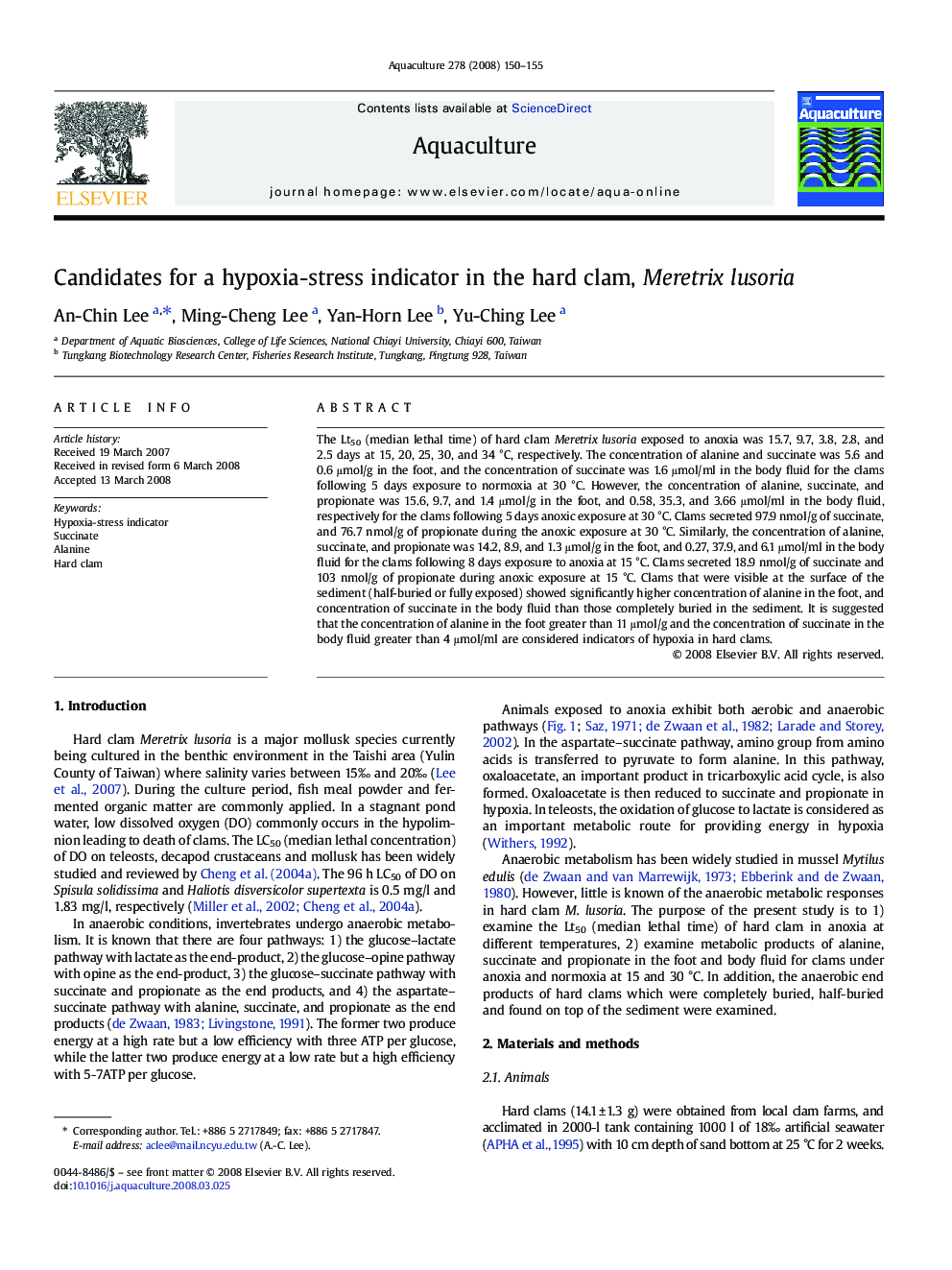| Article ID | Journal | Published Year | Pages | File Type |
|---|---|---|---|---|
| 2424655 | Aquaculture | 2008 | 6 Pages |
The Lt50 (median lethal time) of hard clam Meretrix lusoria exposed to anoxia was 15.7, 9.7, 3.8, 2.8, and 2.5 days at 15, 20, 25, 30, and 34 °C, respectively. The concentration of alanine and succinate was 5.6 and 0.6 μmol/g in the foot, and the concentration of succinate was 1.6 μmol/ml in the body fluid for the clams following 5 days exposure to normoxia at 30 °C. However, the concentration of alanine, succinate, and propionate was 15.6, 9.7, and 1.4 μmol/g in the foot, and 0.58, 35.3, and 3.66 μmol/ml in the body fluid, respectively for the clams following 5 days anoxic exposure at 30 °C. Clams secreted 97.9 nmol/g of succinate, and 76.7 nmol/g of propionate during the anoxic exposure at 30 °C. Similarly, the concentration of alanine, succinate, and propionate was 14.2, 8.9, and 1.3 μmol/g in the foot, and 0.27, 37.9, and 6.1 μmol/ml in the body fluid for the clams following 8 days exposure to anoxia at 15 °C. Clams secreted 18.9 nmol/g of succinate and 103 nmol/g of propionate during anoxic exposure at 15 °C. Clams that were visible at the surface of the sediment (half-buried or fully exposed) showed significantly higher concentration of alanine in the foot, and concentration of succinate in the body fluid than those completely buried in the sediment. It is suggested that the concentration of alanine in the foot greater than 11 μmol/g and the concentration of succinate in the body fluid greater than 4 μmol/ml are considered indicators of hypoxia in hard clams.
